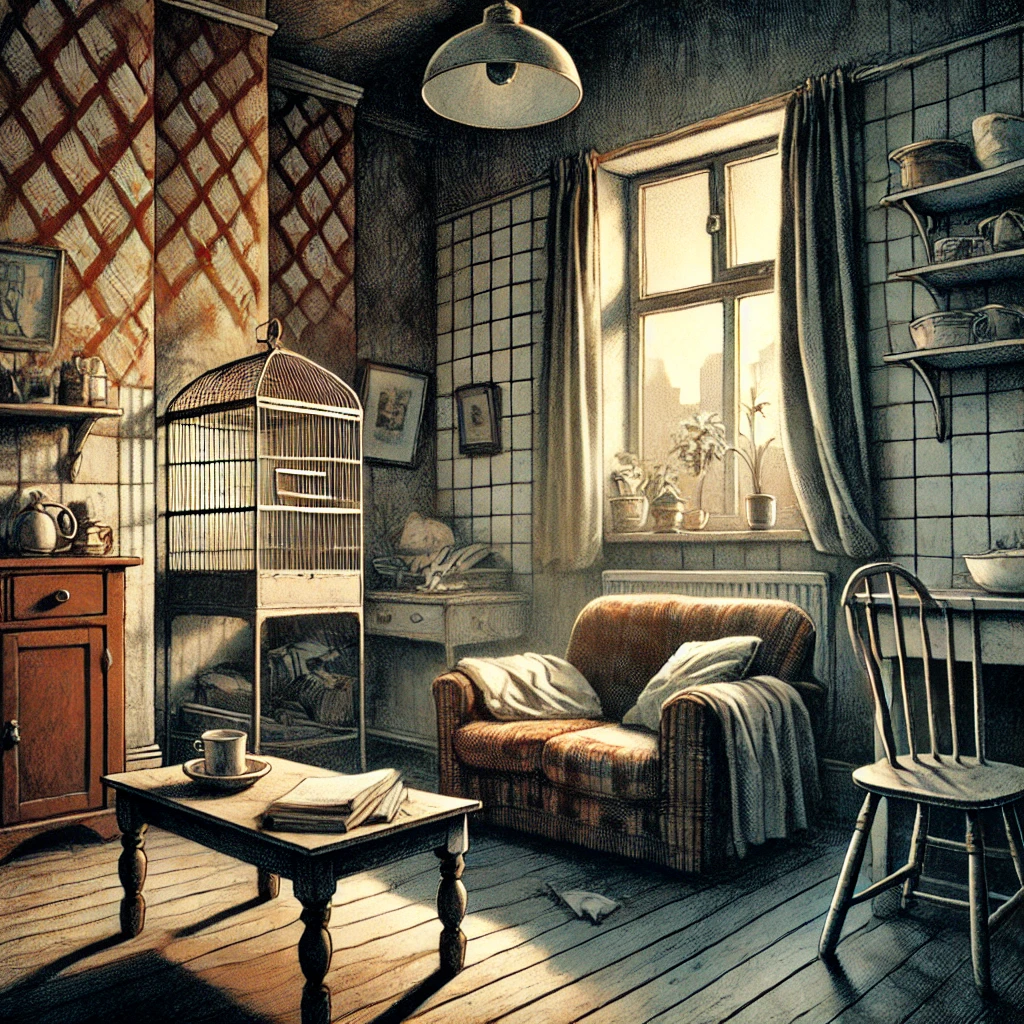
Main Ideas:
1. Metaphorical Landscapes: British New Wave literature utilised settings as metaphors for characters’ emotions and societal struggles.
2. Psychological Interiors: Interior spaces and their details reflected characters’ inner lives and relationships.
3. Industrial Backdrops: Urban-industrial settings symbolized both opportunity and oppression for the protagonists.
4. Class and Social Commentary: Visual descriptions captured the fragmentation and complexity of British class structures.
5. Freedom of Form: Authors of this movement rejected traditional storytelling conventions, embracing authenticity and social realism.The Long-Read: How These Conclusions Emerged
When analyzing British New Wave literature, it is impossible to overlook the revolutionary approaches that characterized this movement. Novels like A Taste of Honey by Shelagh Delaney and Room at the Top by John Braine exemplify a shift in literary focus, emphasizing realism and social critique. The following exploration reveals how these conclusions were formed, rooted in close examination of key scenes, characters, and themes within the novels.
- Metaphorical Landscapes: The Emotional Terrain of Literature
In A Taste of Honey, Delaney uses physical locations to mirror her characters’ emotional states. For example, Jo’s experience on the ship with Jimmy serves as a metaphor for her first steps into adulthood and romantic discovery. Similarly, Braine’s Room at the Top opens with Joe Lampton’s tattered sock against a backdrop of factories, symbolizing his precarious social standing and his determination to transcend it. These landscapes extend beyond physical descriptions, embodying the struggles and desires of their characters.
- Psychological Interiors: Windows to the Soul
The interiors in British New Wave novels provide deep psychological insights into their characters. In A Taste of Honey, the recurring imagery of a birdcage carried by Helen symbolizes Jo’s constrained existence under her mother’s control. The bird’s disappearance when Jo moves out signifies her attempt at independence, though its eventual return foreshadows Helen’s reassertion of authority.
In Room at the Top, Braine contrasts Susan’s luxurious surroundings with Joe’s modest accommodations to highlight their class disparity. The damp, sparse environment of Joe’s apartment reflects his internal dissatisfaction and struggles, while Susan’s opulent spaces underscore her privilege and detachment from the harsh realities Joe faces.
- Industrial Backdrops: Between Opportunity and Oppression
Industrial landscapes serve as a dual force in both novels. For Joe, the factories in Room at the Top represent financial opportunity and social mobility. He admires the smoke-spewing chimneys as symbols of wealth and ambition. Conversely, in A Taste of Honey, the industrial backdrop mirrors Jo’s alienation and uncertainty, representing an oppressive force rather than a source of hope.
This duality underscores the complex relationship between individuals and their environments, as well as the broader societal systems they navigate.
- Class and Social Commentary: Visualizing Fragmentation
British New Wave literature was deeply concerned with class dynamics, and this focus is evident in both novels. Room at the Top vividly portrays Joe’s interactions with both upper-class figures and the working-class community he leaves behind, revealing the fragmented nature of British society. Similarly, A Taste of Honey uses Jo and Helen’s tumultuous relationship as a lens to explore generational and class-based conflicts.
Both novels’ authors reject sentimentality, instead offering unvarnished portrayals of their characters’ lives. By doing so, they invite readers to grapple with the complexities of social structures and individual aspirations.
- Freedom of Form: Breaking Literary Conventions
Authors like Delaney and Braine rejected traditional narrative styles, opting for a raw, authentic approach that mirrored the realities of post-war Britain. Delaney’s use of Jo’s candid, unpolished voice and Braine’s focus on Joe’s internal monologue exemplify this shift. These departures from convention allowed for nuanced explorations of identity, class, and place, capturing the spirit of a changing era.
Why These Stories Matter
The thematic and stylistic innovations of British New Wave literature remain profoundly relevant. These novels challenge readers to consider the interplay between environment and identity, offering timeless insights into human resilience and societal dynamics. For me, revisiting these works was a journey into the heart of literary realism—a testament to the power of storytelling to mirror, critique, and even shape the world around us.
References
• Delaney, S., 1958. A Taste of Honey.
• Braine, J., 1957. Room at the Top.
• Higson, A., 1984. Space, Place, Spectacle. Screen, 25(4-5), pp.2-21.
• Lacey, S., 1995. British Realist Theatre: The New Wave in Its Context 1956–1965. London: Routledge.
• Lovell, T., 1990. Landscape and stories in 1960s British realism. Screen, 31(4), pp.357-376.
• Murphy, R., 2014. New Morning: Optimism and Resilience in Tony Richardson’s A Taste of Honey and The Loneliness of the Long Distance Runner. Journal of British Cinema and Television, 11(2–3), pp.378-394.
• Zarhy-Levo, Y., 2010. Looking Back at the British New Wave. Journal of British Cinema and Television, 7(2), pp.232-247.
Stay tuned for more reflections on the power of storytelling.